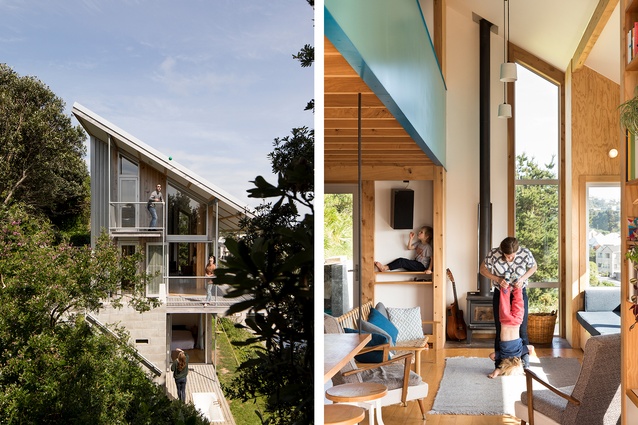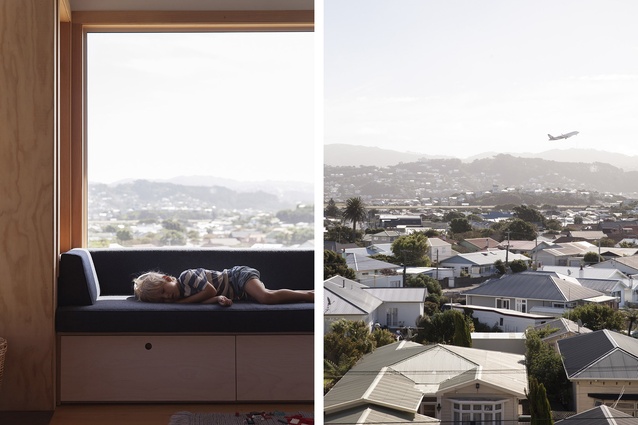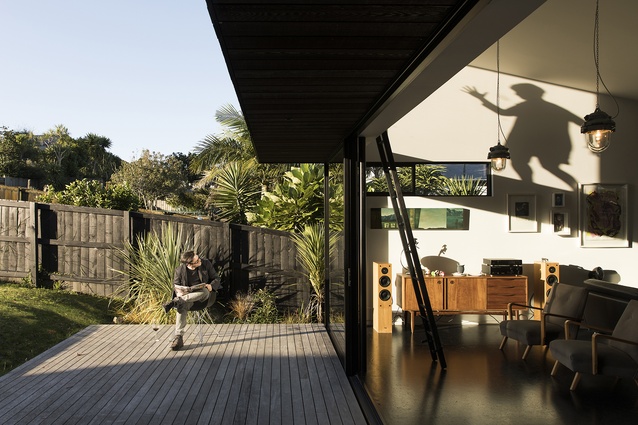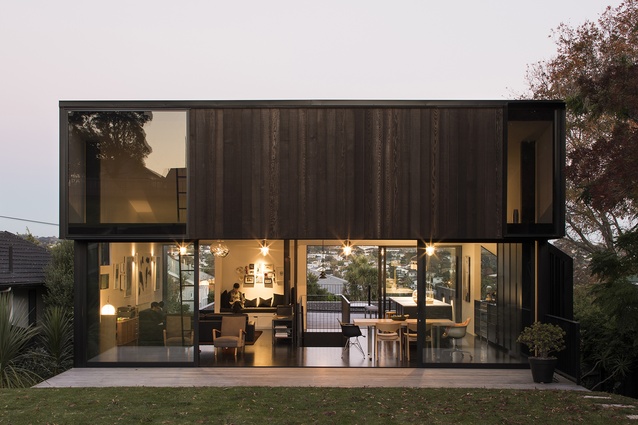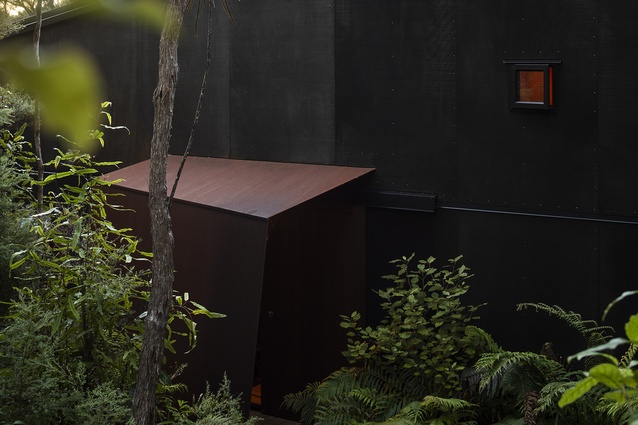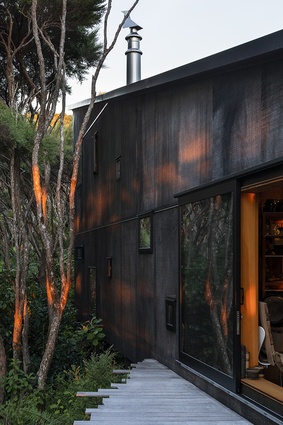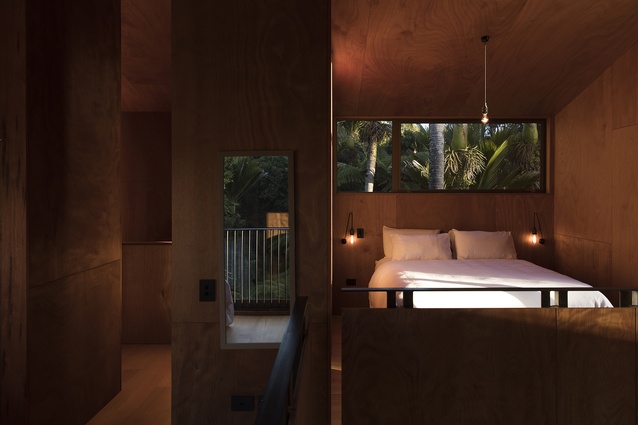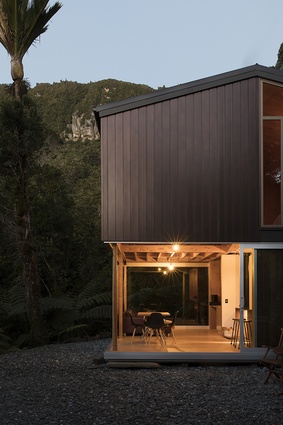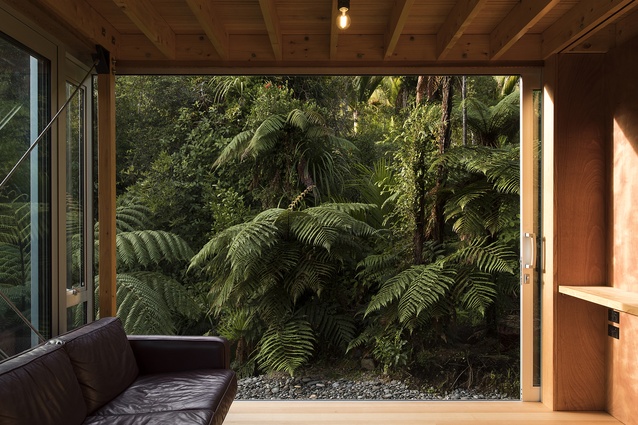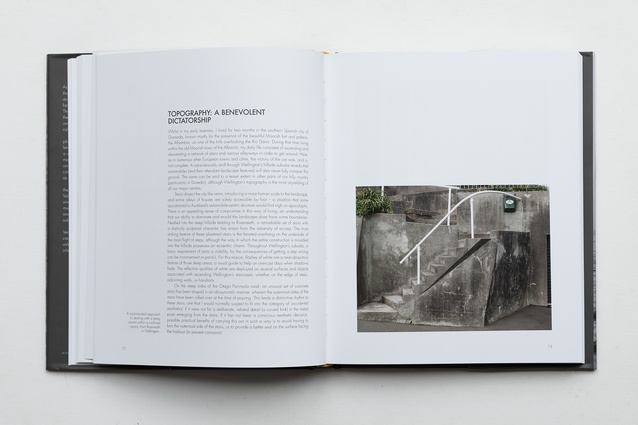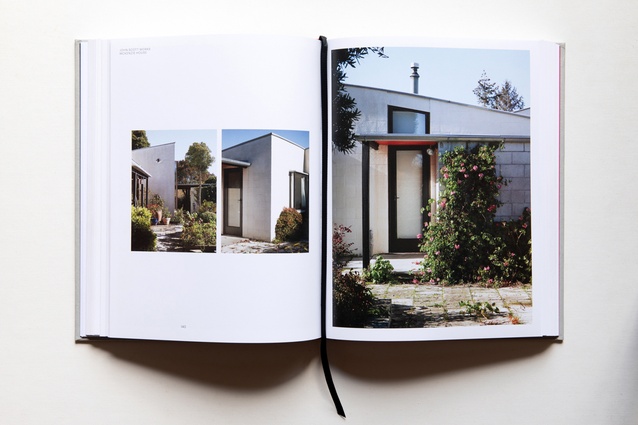Viewfinder: David Straight’s top five
Leading architectural photographer and name behind several books chronicling the best of New Zealand's environment, David Straight, recounts his favourite shoots to date.
Tell us about the images you chose for this article and why you feel they are significant or indicative of your work?
David Straight (DS): There are so many projects I’ve shot that I love: amazing houses, wonderful people, great locations. The reason one project resonates more than another is often deeply personal. The more I learn about what I do the more I truly think the most important part of architecture is the people, be it client, homeowner or community. All these projects reflect that in some way. These are projects that have either informed how I think about photography and architecture and how I approach it, or reflect my understanding of what’s important.
1. John Scott’s Ngamatea homestead, which I shot as part of my John Scott project, really crystallised how I think about his architecture specifically, but also about how good architecture can interact with the land upon which it sits. His Aniwaniwa Visitors Centre building started the journey of how I think about architecture and landscape, but Ngamatea really drove it home. I photographed it on a cold, windy day in July. The site is so exposed on a high plateau in the central north island yet the building acts like a broad, bracing back with encompassing arms. It is a remarkable house.
2. Top Shelf by Spacecraft Architects remains one of my favourite shoots. Their architecture is a revelation to me. It is clever and subtle and not trying to be the most expensive thing out there, but just really great architecture on a budget. They’re trying to answer some pretty fundamental questions of how we live, socially and sustainably. Shooting all day with their kids tearing around the place was great. They show how a hard-wearing house really works.
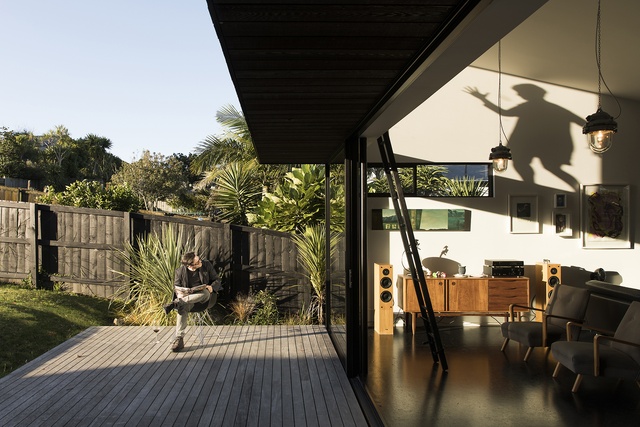
3. Space Invader by PAC Studio is another favourite but for conflicting reasons. Sometimes a shoot is just good fun. These pictures are actually the result of a complete balls-up on my part. I’d managed to delete the first shoot we did there. It’s the only time it’s ever happened and was deeply embarrassing. But, the subsequent shoot was a success and I really like these pictures, especially the one of the shadow which happens to be my partner, Anna.
4. Karekare House by Catherine Griffiths, Bruce Connew and Athfield Architects is a house for photographer Bruce Connew and designer/typographer Catherine Griffiths. It’s a wonderful little place filled with life. It feels like it’s been dropped there among the bush, solid and embracing. By Bruce’s direction, the northern elevation of the house references a famous Henri Cartier-Bresson photograph shot in Spain in 1933 showing a facade with a series of various sized windows. It’s a beautiful thing.
5. Coastal Cabins by Upoko Architects is a gem. This one is more about the experience really. I grew up on the West Coast so the landscape reminds me of home. It’s relentless and powerful and ever so slightly dark and menacing. This place sits tucked into the bush and feels calm and considered. The doors open up and frame the bush like a giant TV screen. And the way light warms the interior here is beautiful.
You are an avid, city walker and have been so for as long as I have known you. How did that start?
DS: I was mostly influenced by my grandmother who was, and still is, a dedicated walker. She’s never driven and always walks everywhere. She’s 91 and still going. I remember as a kid being perplexed when she undertook a seemingly pointless walk from Blenheim, where she lives, to Picton a few dozen miles down the road. Why do such a thing? So weird. Anyway, I get it now. I would happily walk anywhere. I think it’s the only thing I feel truly proficient in. Walking became my way of being in the world. Early on I found street photography was the perfect excuse to watch things; people, light, etc. It’s good training for how to see in many ways. But I also walked out of necessity in my student days. I would rather be on two feet going somewhere than spend money for a bus.
Do you have any parameters around these walks? For example, do you walk for long periods at a time? For how long? Do you normally have pre-determined routes or just ‘follow your nose’ around the city?
DS: Generally, I follow my nose. It depends on what I’m doing and now it usually includes a dog so the walking is often directed by his nose. But, to be honest, I don’t walk as much in Auckland anymore. It’s the least walkable city I’ve ever lived in and is so often ruined by cars. It can be quite hostile to pedestrians. The lack of a vibrant public domain and street life is one of my biggest frustrations with Auckland. It’s getting better though. In 2019 Finn McCahon-Jones, who has an encyclopedic knowledge and love for the minutiae of the city, and I put on a series of walking tours as part of the Auckland Arts Festival. It was a brilliant way of re-engaging with the city and its built and material history. I’ve always walked to find things out. To see what something looks like, to always see around the next corner.

That act of walking sort of… forces you to slow down, doesn’t it? It allows you to see detail that would normally not be noticeable when using public spaces as just ways to get from point A to point B. How does that affect your photography?
DS: It is a real luxury to spend slow time in a city. It’s something we don’t do enough. The city is a macro version of a building, a series of systems and pathways, materials and form. The more you walk the more the city seems to unravel and the better understanding you have of it. And the more you repeat yourself the more you start to see. It’s like re-reading a novel or watching a TV show again. It’s also how I shoot; always moving, looking and repeating. But, spending time in a city is more than just looking, there is a real civic good in it. A good, functioning city is a massive civic organism that we are all part of. We are encouraged to share and feel part of that same whole. It frustrates me how anti-social Auckland is sometimes. It’s an amazingly vibrant city, full of potential that’s disconnected from itself. I think we desperately need more public spaces to enjoy each other’s company. Maybe we need a really massive metaphorical dining table… I think we’d be better people for it.
Do these things also affect the amount of gear you carry with you and how you have come to understand light?
DS: I guess so. I’ve never been much of a technical photographer and having something light and portable was always important. I’ve always liked the notion of being able to walk out the door with a backpack on and go to work. I started out wanting to be a documentary photographer so portability is key. I’ve retained some of that in shooting architecture but I’m starting to slow down a little more these days and be a little more considerate.
One of your series of city walks that became a book was post-earthquake Christchurch. As a native, it must have been daunting to see your city changed so much by the quakes.
DS: It changed everything. I haven’t lived in Christchurch for a long time, but it’s where most of my family lives so it’s definitely my home city. Basically, I wanted to see what the landscape of an earthquake looked like. I flew down the day after the February 22nd quake and set out on meandering walks just to see what things looked like. The central city was cordoned off and it was where all the drama was, but the suburbs were just as important. That’s where the people are. In some parts, the damage was subtle and less dramatic but in that subtlety was the evidence of a slow-moving disaster. The ongoing psychological effects, the battles with insurers, the realisation that the land where houses used to sit is now irredeemable. Those shifting landscapes are still endlessly fascinating to an observer but painful and exhausting to the residents.
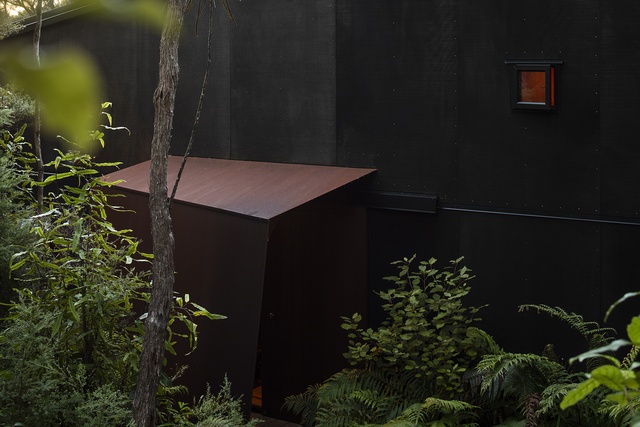
On paper, the idea of photographing concrete, manhole covers and fence posts is not, exactly, riveting stuff, yet your book Vernacular: The Everyday Landscape of New Zealand was both engrossing and beautiful but in a subtle way. What made it so? What makes a photo go from being a mundane record of an everyday object to something totally different?
DS: The simple answer is that question is that the project worked because the idea was good. We can thank my friend Philip Smith, who I collaborated with for that. The whole premise of the book was to consider the overlooked parts of our built landscape, not with a need to record them in a prosaic way, but to make a case for the beauty of our everyday landscape. It turns out that many of those things we ignore, walk over, drive past, are actually really beautiful. You just have to stop and look. I think the book made people do that, or at least reaffirm that this stuff is worth looking at. There is an inherent hierarchy of what we consider to be important in what we look at and consider valuable or worthy. Forever, we’ve valued ourselves as a nation by our natural landscapes. That’s fine and good, although increasingly problematic, but that can be limiting to how we think about ourselves as a country. We’re not just a country of big mountains and beautiful beaches. There is a subtlety and many, many layers to our landscape, not only the everyday built aspects like the ones we looked at in the book. There are so many stories in the landscape; from the imbued knowledge of te ao Māori, to the materials we build with, to the weird and wonderful biodiversity in unexpected places. It’s just a recalibrating of how we look and what we value. I love that stuff.
How crucial do you think art school was in helping you define your aesthetic and were there artists, photographers or designers you explored in school that still resonate with you?
DS: The best thing university did for me was give me time to read. I’m not good at structrued learning; I clashed with some teachers in memorable ways. Ultimately it was the library where I found most comfort. I vividly remember coming across the work of Robert Frank for the first time. His work was certainly important and eye-opening. So too was finding the work of New Zealand photographers like Peter Black and Gary Baigent. I remember seeing the Bechers’ work as a student and hating it. It had no emotion! Now I love it. I’m currently obsessed with Guido Guidi, a brilliant Italian photographer, and Toshio Shibata, a Japanese photographer who makes beautiful work about Japanese infrastructure. Books have always been one of the most important parts to my life.
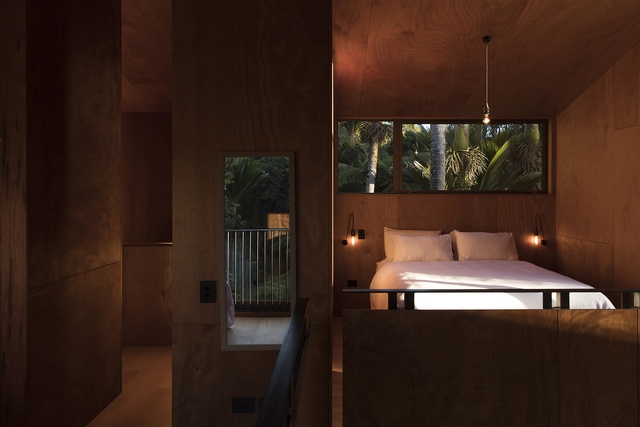
How did you come across the work of architect John Scott? What was your initial reaction to his work, what attracted you to it and, as a photographer, do you see unifying elements in his work that have perhaps not been spoken about often?
DS: I first came across John Scott when I was doing Vernacular. Philip and I visited a few of his buildings during our travels and I started learning more and hearing stories. I became curious. It was during the time I shot Aniwaniwa, before it was demolished, that I started to understand the movement, the reference, playful curiosity as well as rigorous planning and craftsmanship in his work. I still think he was a spatial genius and understood light and landscape better than most. The light qualities in his buildings are outstanding as are the movements from intimate to voluminous. Simply put, they are deeply humane buildings. There is an innate philosophical understanding of tikanga Māori in many of his buildings too. I think that part of his work that isn’t as talked about as much as the visual references to te ao Māori.
You also played a part in trying to safeguard Scott’s Aniwaniwa Visitor Centre. What do you think that process taught you?
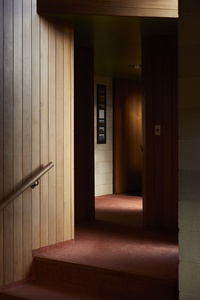
DS: That we don’t really value architecture in New Zealand. It still saddens me to think of what we lost with the demolition of that building. Perhaps it wasn’t Scott’s greatest building but it was remarkable on so many levels and didn’t deserve the treatment it received. The intimacy it allowed with a landscape like Te Urewera was striking. There was no other building like it. But it wasn’t the first great building we’ve lost and it won’t be the last. I think of what future generations could have learned from Aniwaniwa, how the building could have been used if we’d adapted it for another use. We have a pretty bad record of demolishing our past and neglecting to learn from it.
How has the pandemic affected your work and craft?
DS: While it was a stressful and uncertain time, in some ways the city was a dream during the first lockdown; no cars, people walking and cycling everywhere. People being in the world. It was a joy to see. But, I barely took a picture. I’m not sure why. Thankfully, it seems like the industry has barely missed a beat and things are as busy as ever.
See more at davidstraight.net.





